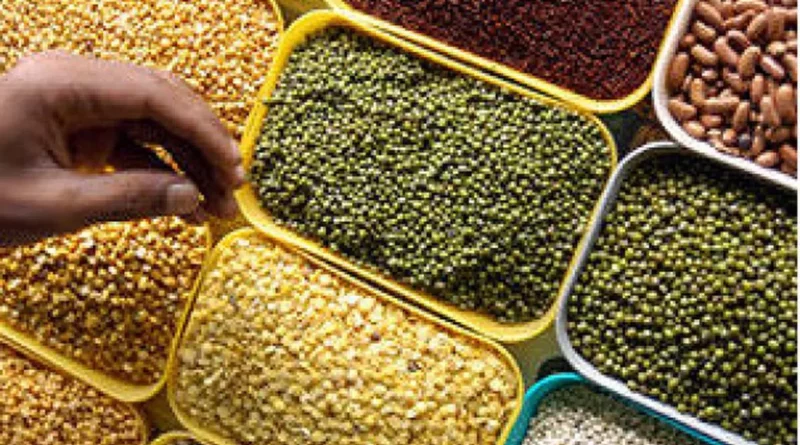Erratic Rain Hits State Kharif Crops, 22% Fall In Grains From 5-Year Average, 35% In Pulses Expected
The late onset of monsoon and its inconsistency has impacted the kharif crop in Maharashtra.The first advance estimate of production from the state agriculture department predicts a 22% drop in foodgrain production in the kharif season this year, compared to the 5-year average. The worst hit will be pulses, which is set to see a 35% drop in production compared to the 5-year average.Cereal production is set to see an 18% fall. The production of oilseeds has been affected the least, and production is expected to fall only by 8%.”In June, the monsoon was delayed by around a fortnight. Then there was excess rain in July, which affected the crops. In August, there was a long dry spell which caused problems in the flowering stage of the crops. This will affect the production and productivity of the crops,” said the state’s joint director of agriculture, Vinaykumar Awate.The impact on farmers remains to be seen, said activists. The main crops in terms of area under cultivation in the state are the cash crops of soyabean and cotton.Mung & urad dal productionis expected to fall steeplyAfter erratic monsoon rain, the state has estimated a drop in kharif crop, especially pulses. “The area under pulses is much lower than the area under soyabean, which has done well. Farmers in the state have moved away from pulses because in the past, the Centre has imported pulses, leading to a price crash in the domestic market. Farmers here have also moved away from millets like jowar and bajra because these crops do not receive price support from the government,” said Ajit Nawale from the Kisan Sabha.Within pulses, mung and urad dal are expected to take the biggest hit. Mung production is expected to decline by 66% and that of urad by 50% compared to the 5-year average. Tur dal production is expected to decline by 30%. Within cereals, the production of kharif jowar is set to decline by 67% and bajra by 66% compared to the 5-year average.Within oilseeds, the production of the largest crop soyabean is expected to decline by only 6% compared to the 5-year average. However, the production of smaller crops like sunflower, groundnut and sesame is expected to see a sharper drop. Groundnut production is expected to decline by 41%, sunflower production by 90% and sesame production by 65% compared to the 5-year average.The rainfall in the state so far has been 91% of average, though there has been a rain deficit in North Maharashtra, Pune and Marathwada. August was challenging for the state as there was a three-week-long dry spell and a 60% rain deficit.
This article has been republished from The Times of India

